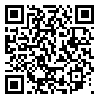Volume 15, Issue 2 (8 2002)
J Dent Med-tums 2002, 15(2): 36-42 |
Back to browse issues page
Download citation:
BibTeX | RIS | EndNote | Medlars | ProCite | Reference Manager | RefWorks
Send citation to:



BibTeX | RIS | EndNote | Medlars | ProCite | Reference Manager | RefWorks
Send citation to:
Nokar S, Monzavi A, Hashemi F. Measurement of the convergence angle in teeth prepared for single crown. J Dent Med-tums 2002; 15 (2) :36-42
URL: http://jdm.tums.ac.ir/article-1-457-en.html
URL: http://jdm.tums.ac.ir/article-1-457-en.html
Abstract: (7994 Views)
Retention, resistance and marginal integrity mostly depend on tooth preparation. An appropriate convergence angle fulfil this purpose, to high extent. In this study, a new method was used to measure the convergence angle of the teeth prepared for single crowns in Genera! practitioners" offices in Tehran. In order to do this. 325 dyes, prepared by General dentists in Tehran, were collected from 10 laboratories. All dyes wore trimmed at the area below the finishing line and then were scanned (Genius Color page- FIR 6) buccoiingualiy and mesiodistaily. Convergence angle of dyes were also measured with Adobe Photoshop (5.0) software. Data were analyzed by variance analysis test and 1- student bv the help of SPSS software. Results showed that the average convergence angle ranged from 16.18+8.34 to 35.1 8~10.38 which belonged to maxillary canine and mandibular molars, respectively, and the measured convergence angle is more than the ideal value of 10-16 degrees. Dyes of the madibular molars were ma"illar" convergent. These conclusions are helpful for professors, dentistry students and dentists, and arc an indicative of the practice quality of General practitioners in Tehran. Due to the fact that a convergence angle, more than the allowed limitation, endangers retention, resistance and marginal integrity of the restoration, paying attention to the principles of tooth preparation and proper application of instruments and dental cements, can progress fwed restorations quality.
Keywords: Convergence angle, Single crown
| Rights and Permissions | |
 |
This work is licensed under a Creative Commons Attribution-NonCommercial 4.0 International License. |




